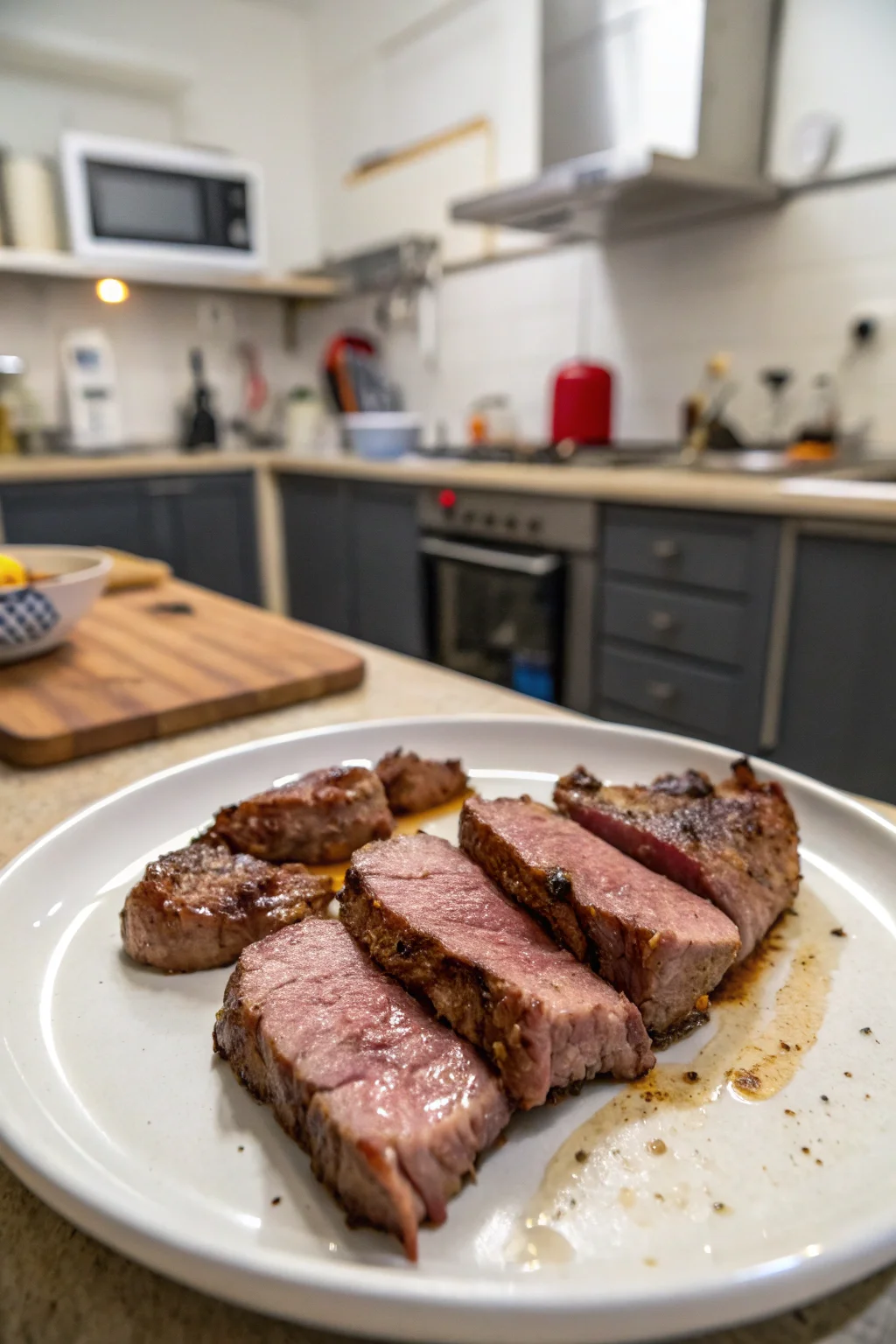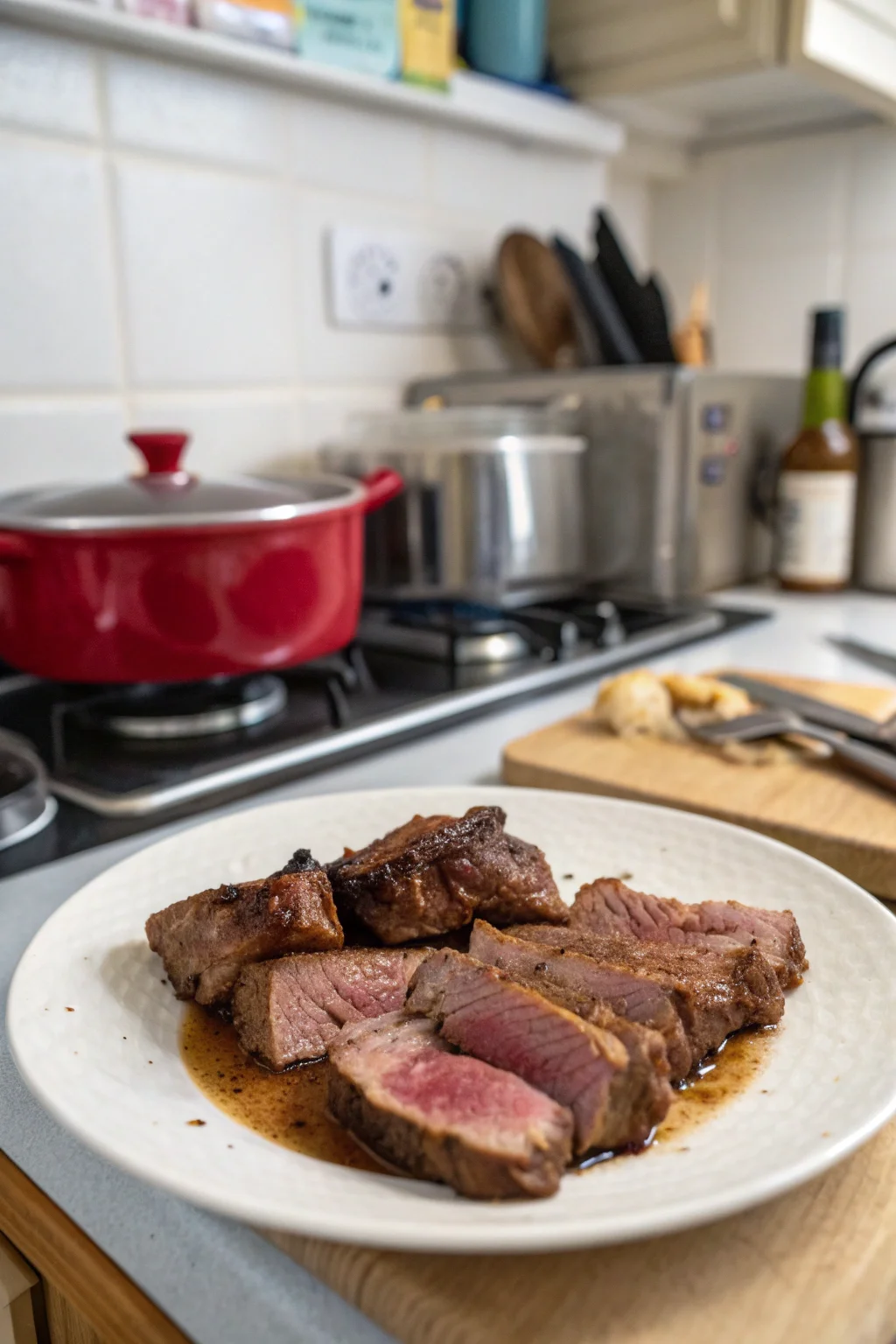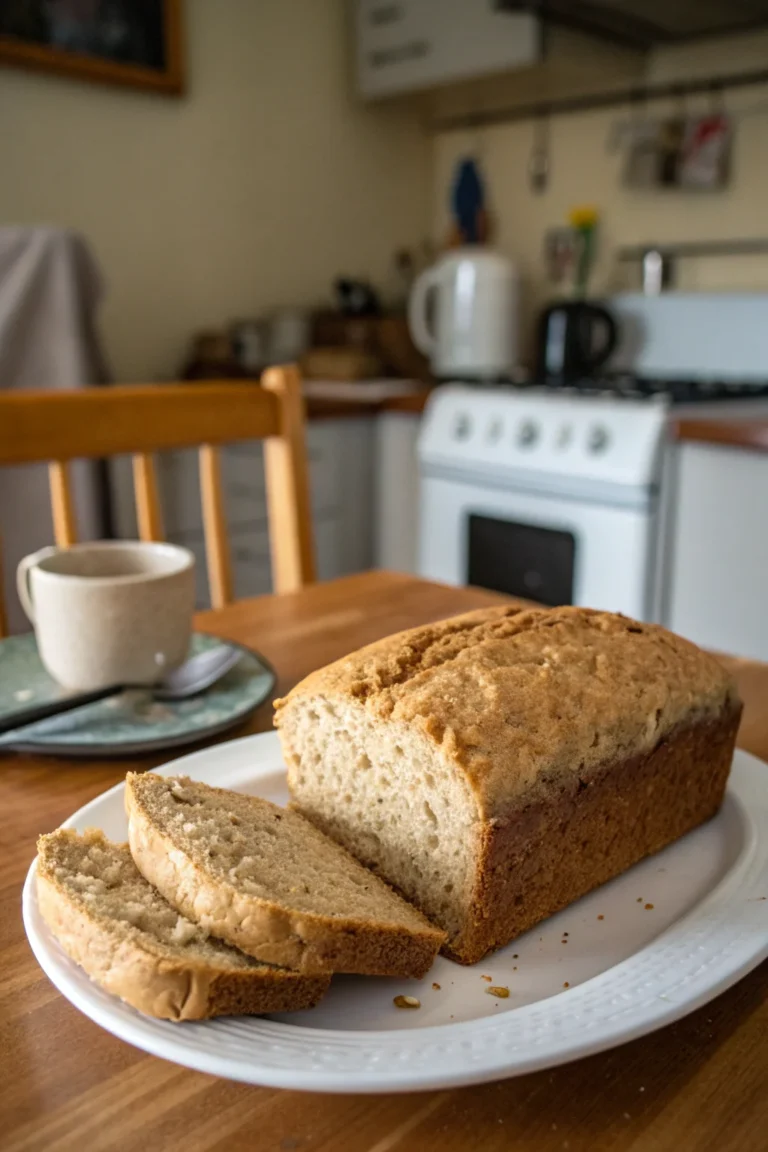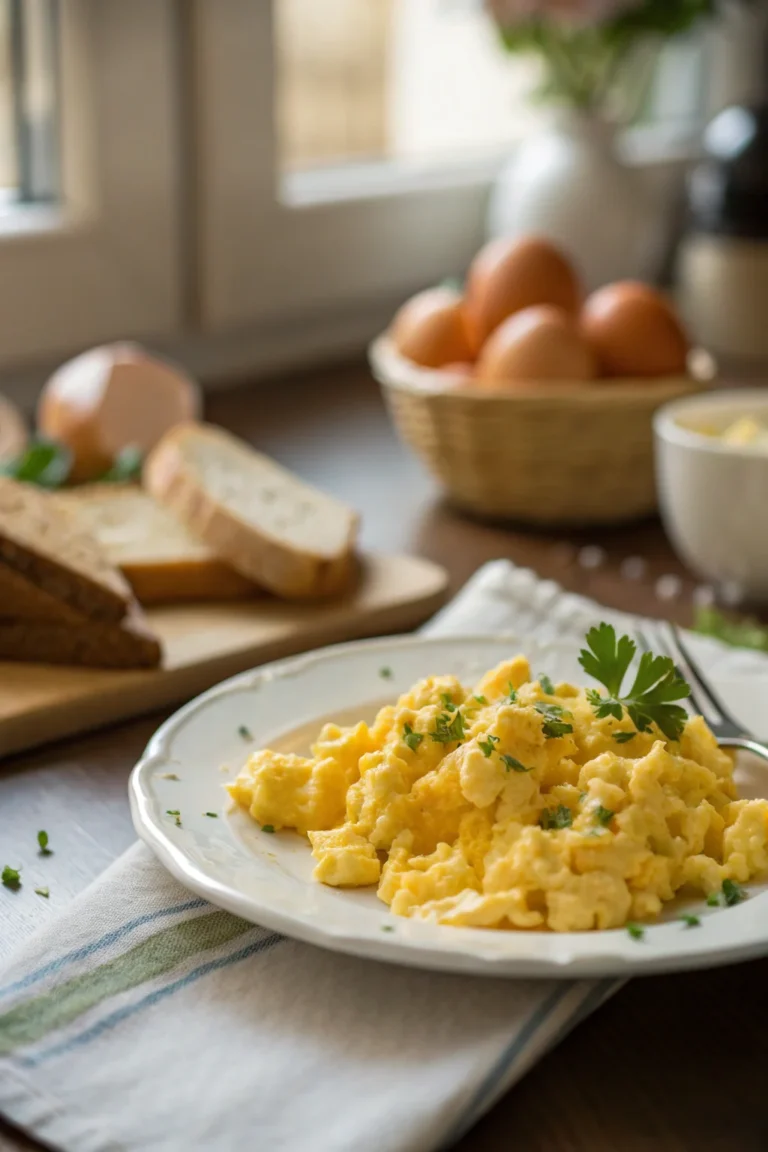What Meat Goes Best in a Slow Cooker? | Tender Cuts Explained
Slow cookers are a game-changer in the kitchen, offering a convenient and fuss-free way to transform tough cuts of meat into tender, flavorful dishes. The slow cooking method allows flavors to meld beautifully, creating meals that are rich in taste and texture. However, choosing the right type of meat can make all the difference in your meal’s outcome. In this guide, we’ll explore which meats work best for slow cooking and why, ensuring your next meal is a hit.
Table of Contents
What are the Best Types of Meat for Slow Cooking?

The best meats for slow cooking are those that benefit from low and slow heat to break down collagen and connective tissues, resulting in tender, juicy dishes. Consider these options:
- Beef Chuck Roast: Known for its marbling and flavor.
- Pork Shoulder: Perfect for pulled pork.
- Lamb Shanks: Ideal for rich, hearty dishes.
- Chicken Thighs: Retain moisture better than breasts.
These cuts are typically more affordable and become tender when cooked slowly. Their higher fat content and connective tissues make them ideal candidates for a slow cooker, which slowly melts the fat and breaks down tough fibers, resulting in succulent dishes.
Why is Beef Chuck Roast Ideal for Slow Cookers?
Beef chuck roast is a classic choice for slow cooking due to its high content of connective tissue and fat. When cooked slowly over several hours, the collagen in the chuck roast breaks down, creating a rich, gelatinous texture that is incredibly satisfying. This cut is perfect for pot roast, beef stews, and shredded beef dishes. Its marbling not only adds flavor but also contributes to the moist end product.
To enhance the flavor, consider searing the beef chuck roast before placing it in the slow cooker. This step caramelizes the surface of the meat, adding a depth of flavor that permeates the entire dish as it cooks. Additionally, the chuck roast absorbs spices and herbs well, making it a versatile option for various cuisines. For more tips on making the perfect pot roast, check out our best pot roast recipe guide.
How Does Pork Shoulder Transform in a Slow Cooker?
Pork shoulder, often used for pulled pork, is a fatty cut that transforms beautifully when slow-cooked. The slow cooking process allows the fat to render down, keeping the meat moist and flavorful. It’s excellent for BBQ pulled pork sandwiches or tacos. Season it with a spice rub and cook on low for 8 hours for optimal results.
To maximize flavor, consider marinating the pork shoulder overnight with a mix of spices, brown sugar, and a touch of vinegar or citrus juice. This not only tenderizes the meat further but also infuses it with flavor that develops beautifully during the slow cooking process. For more recipes using pork shoulder, visit Serious Eats.
Are Chicken Thighs Better Than Breasts in Slow Cookers?
Chicken thighs are often preferred over breasts for slow cooking because they stay moist and flavorful. The higher fat content in thighs prevents them from drying out, unlike breasts, which can become tough. Thighs are versatile and work well in soups, curries, and casseroles.
When preparing chicken thighs for the slow cooker, it’s beneficial to remove the skin if you want to reduce the fat content, although leaving it on can add flavor and help retain moisture. You can also brown the thighs before adding them to the cooker, enhancing the overall taste of the dish. As the thighs cook, they absorb the surrounding flavors, making them an excellent choice for bold, aromatic dishes.
What Makes Lamb Shanks Suitable for Slow Cooking?

Lamb shanks are rich in flavor and benefit from slow cooking to become tender. The bone-in cut adds depth to the dish, while the connective tissue melts down, creating a succulent texture. Slow-cooked lamb shanks pair well with robust herbs like rosemary and thyme.
To achieve the best results, consider braising the lamb shanks in a flavorful liquid such as red wine or broth before slow cooking. This not only enhances the richness of the lamb but also ensures a deep, savory flavor profile. Accompany the shanks with root vegetables or beans, which will soak up the flavorful juices, creating a complete, hearty meal.
Can You Use Ground Meat in a Slow Cooker?
Ground meat can be used in a slow cooker but requires browning first. This step enhances flavor and texture. Ground beef or turkey works well in chili, spaghetti sauce, or meatballs. Browning helps in maintaining the structure of the meat during the slow cooking process.
When using ground meat in a slow cooker, it is crucial to drain any excess fat after browning to prevent the dish from becoming greasy. Additionally, using a mix of ground meats, such as beef and pork, can add complexity to the flavor. Spices and herbs should be added during the browning process to allow the flavors to meld during the slow cook.
How Does Brisket Perform in a Slow Cooker?
Brisket is another excellent cut for slow cooking. Known for its toughness, the slow cooker tenderizes the meat, making it ideal for BBQ brisket or corned beef. Season generously and cook for 8–10 hours for the best results.
For a classic brisket, rub the meat with a mix of spices and allow it to sit overnight. The slow cooking process allows the brisket to absorb all the flavors, resulting in a deeply savory dish. Pair your brisket with a tangy sauce or serve it alongside pickled vegetables to balance the richness of the meat.
Is Venison Suitable for Slow Cooking?
Venison is lean but can be tenderized in a slow cooker. It’s perfect for stews and roasts. Adding fat, like bacon, can enhance flavor and prevent dryness. Slow cooking venison with aromatic vegetables and wine can mask any gamey flavors.
To make the most of venison in a slow cooker, marinate it beforehand to tenderize the meat and infuse it with flavor. Using a marinade with acidic components, such as vinegar or citrus, can help break down the tough fibers. During cooking, add hearty root vegetables and robust herbs like juniper berries or thyme to complement the meat’s flavor.
How Should You Prepare Short Ribs for the Slow Cooker?
Short ribs are perfect for slow cooking due to their marbled fat and connective tissue. They turn fall-off-the-bone tender and are great in Korean BBQ or hearty stews. Sear the ribs before slow cooking to deepen the flavor.
When preparing short ribs, consider using a braising liquid that includes soy sauce, ginger, and garlic for an Asian-inspired dish. The slow cooking process allows the flavors to penetrate the meat, resulting in a dish that is both rich and savory. Serve the ribs with a side of steamed rice or mashed potatoes to soak up the delicious sauce.
What About Using Fish in a Slow Cooker?
Fish is generally not suitable for slow cooking due to its delicate texture, which can break down too much. However, firm fish like salmon can be cooked on low for short periods. Consider adding fish towards the end of the cooking time to avoid overcooking.
If you choose to cook fish in a slow cooker, ensure it is well-seasoned and placed on top of vegetables or a bed of aromatics. This helps protect the fish from direct heat and adds flavor. Cooking fish with a sauce or broth can also prevent it from drying out and enhance its taste.
Can You Cook Sausages in a Slow Cooker?
Yes, sausages are great in a slow cooker. They can be added to casseroles or cooked in sauces. Brown them first to enhance flavor and maintain texture. Cooking sausages with vegetables and beans can create a hearty, one-pot meal.
When preparing sausages, experiment with different varieties such as spicy Italian or smoky chorizo to add unique flavors to your dish. Pair the sausages with complementary ingredients like bell peppers, onions, and tomatoes to create a balanced and satisfying meal. The slow cooking process melds the flavors beautifully, resulting in a dish that’s perfect for any occasion.
Should You Trim Fat Before Slow Cooking?
Trimming excess fat is recommended but leave some for moisture and flavor. Too much fat can make the dish greasy, but some fat helps tenderize the meat. Balance is key to a perfect slow-cooked meal.
Before cooking, assess the cut of meat and remove visible excess fat, especially if the meat is particularly fatty. This helps prevent an overly greasy dish and ensures the flavors are well-balanced. However, remember that a small amount of fat is beneficial, as it adds flavor and helps keep the meat moist throughout the cooking process.
How Does Cooking Time Affect Meat Tenderness in a Slow Cooker?
Cooking time is crucial for tenderness. Most meats become tender after 6–8 hours on low. Overcooking can lead to dryness, so adjust time based on the cut and recipe. Always use a meat thermometer to check for doneness.
To avoid overcooking, familiarize yourself with the specific requirements of the meat you’re using. For tougher cuts, longer cooking times are often necessary to break down the fibers. However, for more delicate meats, keep an eye on the cooking time to maintain the desired texture. Using a meat thermometer ensures that the meat reaches the appropriate internal temperature, providing a perfectly cooked dish every time.
Wrap-Up
Choosing the right meat for your slow cooker can elevate your meals, creating dishes that are both tender and flavorful. From beef chuck roast to lamb shanks, each cut brings its unique qualities to the table. For more inspiration, explore our slow cooker recipes to find your next favorite meal. Happy slow cooking!






